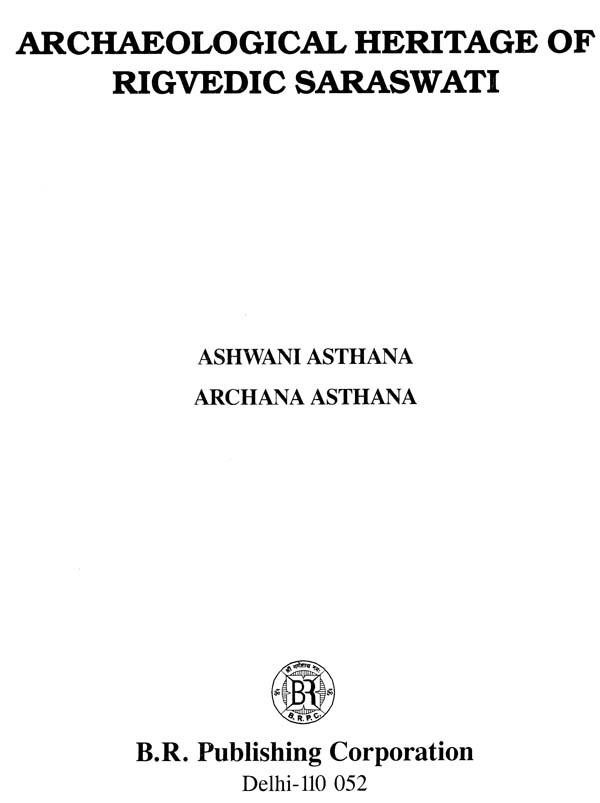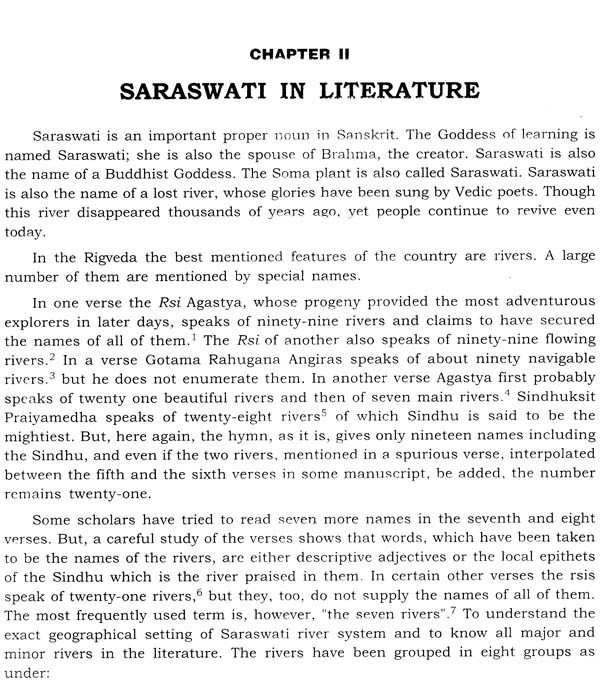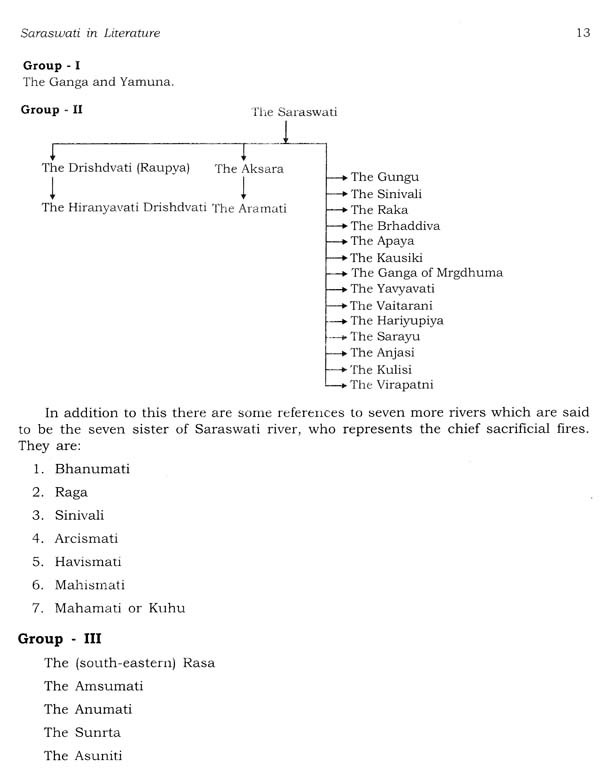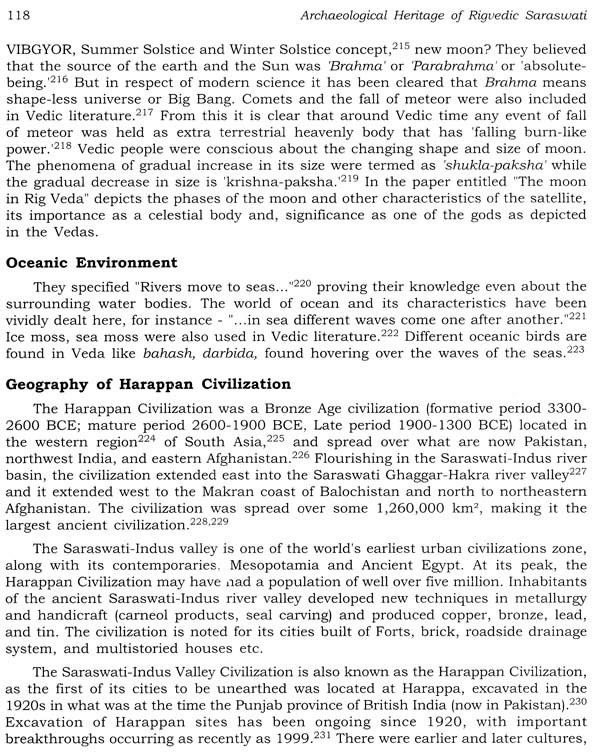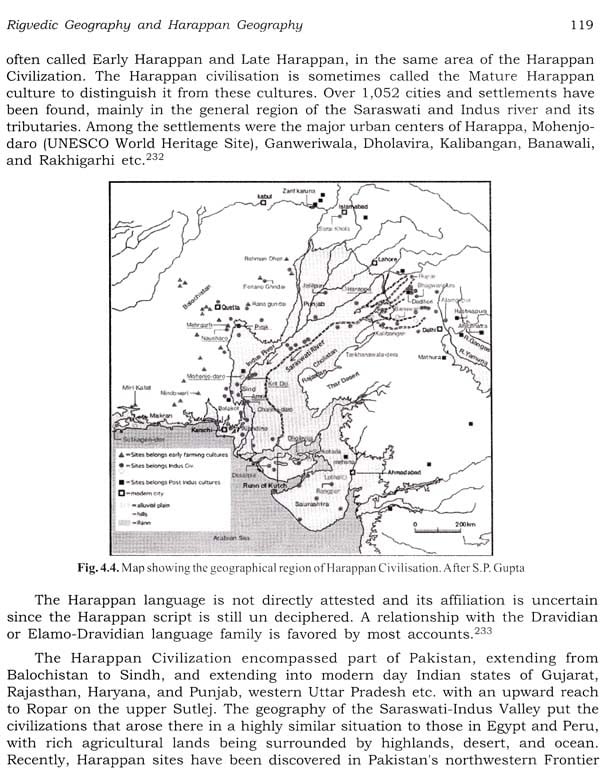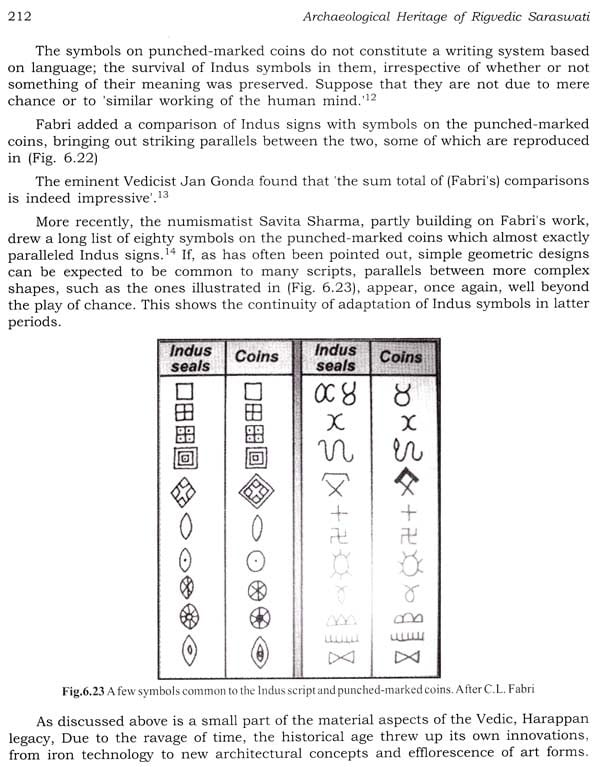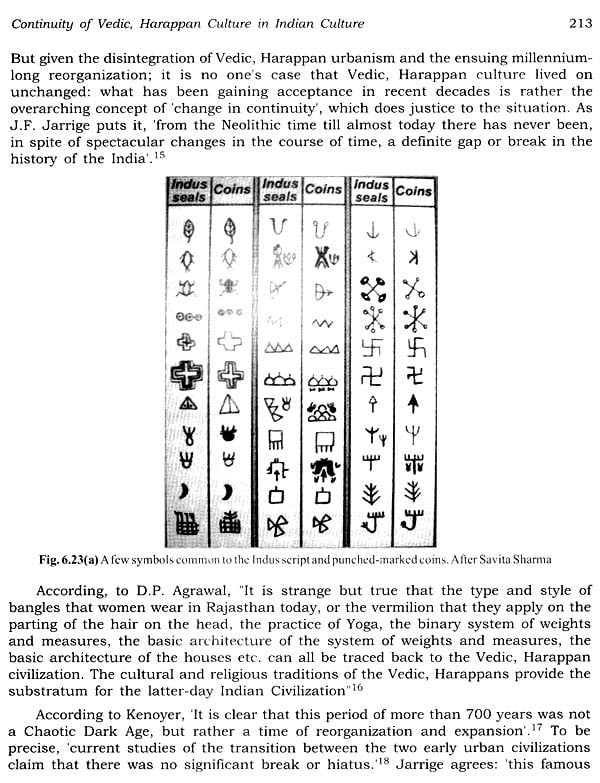
Archaeological Heritage of Rigvedic Saraswati
Book Specification
| Item Code: | AZE615 |
| Author: | Ashwani Asthana and Archana Asthana |
| Publisher: | B.R. Publishing Corporation |
| Language: | ENGLISH |
| Edition: | 2017 |
| ISBN: | 9789386223777 |
| Pages: | 254 (Throughout B/w Illustrations) |
| Cover: | HARDCOVER |
| Other Details | 11.00x9.00 |
| Weight | 1.25 kg |
Book Description
The Saraswati River, along with its tributaries, such as the Drishadwati, etc., enjoyed great fame and prestige during the Vedic times. The Vedic Civilization our Heritage-may be therefore, considered as a gift of the Rigvedic Saraswati.
The objectives of the present book are to understand the following points:
1. Geographical extent of Vedic and Harappan Civilization; 2. Role of Saraswati in the growth and prosperity of Vedic and Harappan Civilization; 3. Relation between Vedic and Harappan Civilization (material culture study); 4. Causes of dawn and devolution of Vedic/Harappan Civilizations; and 5. The evolution and continuity of Indian heritage from Rigvedic-Harappan times.
To meet the above objectives a detailed examination of all the facts available through various published sources in Archaeological, Literature, Geological, Geog have been collect dividing the book into sever etc., have been collected and discussed, by dividing the book into seven chapters.
Dr. Archana Asthana is an Archaeologist and Art Historian. She did her M.A. in History from G.G.D University, Bilaspur. She is a first class first and gold medalist throughout her academic carrier. Dr. Archana did her P.G Diploma in Archaeology from Institute of Archaeology, Archacological Survey of India and D.Phil. on "Transitional Phase of Buddhist Art Between Sunga to Kusana Period" (with special reference to Sanchi Stupa No. 1, to early art of Mathura in the Kusana Period) from National Museum Institute, New Delhi. Dr. Archana has experience of exploration and excavations of many proto-historic to historical-sites, and all her works have been attested by the diversified publications in the form of articles in journals and news papers of national and international repute. She is also visiting faculty at the Kendriya Vidhyalaya, C.C.R.T., SCERT and Institute of Archaeology, Delhi. At present she is working as Assistant Superintending Archaeologist in Archaeological Survey of India, New Delhi.
After millennium long slavery and savagery Europe emerged from ignorance about six or seven centuries earlier which they call the Age of Renaissance. This was the birth of the people who gained enlightenment two centuries later. By their perseverance and diligence they started probing about the world around them and by the middle of nineteenth century found themselves masters of many continents on the globe. Of course, this was done by treachery and deceit in the name of Christianity. To perpetuate the power, it was felt necessary to know about the past history and tradition of their subjects. This culminated in writing a new history of the world by rejecting the entire past history and tradition as myth. Bible provided guidance as a model in matters of history and chronology: later biblical history was abandoned but chronological basis was applied to the new history created by them. Archaeology was a by-product of these efforts.
Important ancient sites in the colonies were identified and excavated but instead of relating the finds with the traditional history of the land these bewildered excavators named them after some small or insignificant nearby village of the locality and called 'cultures. However, some cultures were also named after the pottery and other objects discovered in the region but refrained, from relating with the local tradition and history of the people.
Such a situation was destined to lead nowhere. Artifacts discovered in excavations (or explorations) were scientifically classified and studied in isolation. Now, archaeology has become a subject in which only specialists could be involved. Common man has little involvement in archaeology of his land. Fields of researches in prehistoric studies are so divergent and highly specialized that it is difficult to determine what they really want to know by their investigations. Some study the primary occupation floors o early man in order to discern the stone fabricating activities, their techniques and finished types.
Consequent upon, we approached Dr. S.P. Gupta and discussed with him the various issues on the subject and with his suggestions and guidance we started collecting information to seek answers like, "Who were the Rigvedic people? What is the bearing of Rigvedic Saraswati and Harappan Civilization in our Indian culture and traditions?" etc. In fact the topic was in form of a question, why we invoke Goddess Saraswati in any academic and cultural events, whether in school or college. seminar, or even in any other functions? We being archaeologists made some attempts on the issue by presenting our research papers in seminars and conferences to know the truth and reality of the problem.
It is common knowledge that the subject is vast and voluminous, much has been written on it. Even presently, each year several research volumes are produced. But, why! What is so very special about this subject? Just, because we know so little about it. The scholars are still working on the issue around the world, but their works are very specific, according to their field of specialization, without taking into account the. In our present book, we have tried our best to bring the available published facts and figures of almost all the researches done so far by the experts from different fields of studies for analysis on this issue -under one roof with an interdisciplinary approach to the subject matter, so as to examine and understand The Heritage of Rigvedic Saraswati', which is consciously or in-consciously rooted deeply in our day to day life.
The present research topic, being very vital, important and debatable ice.. "Archaeological Heritage of Rigvedic Saraswati" tries to examine and understand the Heritage of India' and makes it understandable to the people, specially students, about our continuous and uninterrupted Indian Heritage. We are sure that in posterity our present research work in form of this book will not only throw new light on the studies of Harappan and Rigvedic Civilizations, but will also help the students to undertake further researches in this field and its related issues.
Nomenclature<
For more than two decades, from 1921 through 1941, several other sites yielding similar material remains came to light, such as Chanhudaro in Sindh on the river Ravi- Indus. However, the site of Harappa was visited by several scholars, including Charles Masson and Cunningham in the 19th century, but the antiquity of the remains collected at the site in the form of the inscribed seals, painted pottery, chert blades, etc. could not be guessed even remotely by any one of these early explorers. For them these were indeed 'enigmatic. Unfortunately, the script used by the people of this civilization still remains an enigma even though the basic nature of the civilization and its date are now fairly known to us. Hence, the civilization could not be precisely named; it was called by some scholars as the Indus or Indus valley Civilization and by others as the 'Harappan' or 'Harappan Civilization' andalso as Indus Saraswati Civilization'.
This is done so because the new archaeological ground realities demanded it. For example, Refigure Mughal, an eminent Pakistan archaeologist, has discovered about 363 sites of this civilization in that part of the Saraswati basin which is located in the Bhawalpur region of the Bikaner deserts. Similarly, J.P. Joshi, R.S. Bisht, UV. Singh, Suraj Bhan and others have discovered around 250 sites in the basins of the Saraswati and Drishadwati as well as their tributaries in the north-eastern Rajasthan, Haryana and Western Uttar Pradesh.2 There are more than 650 sites on the Saraswati river and its tributaries and hardly 100 sites on the Indus and its tributaries.
**Contents and Sample Pages**
